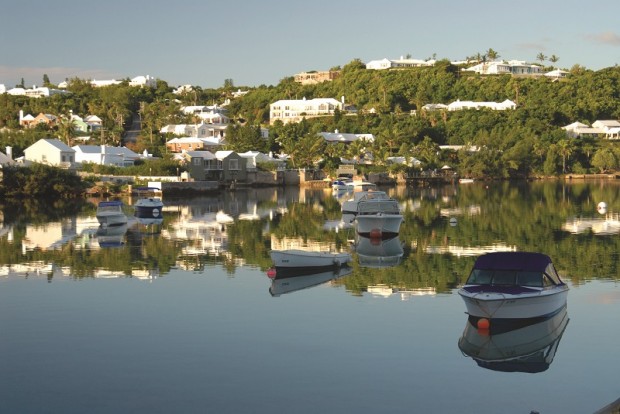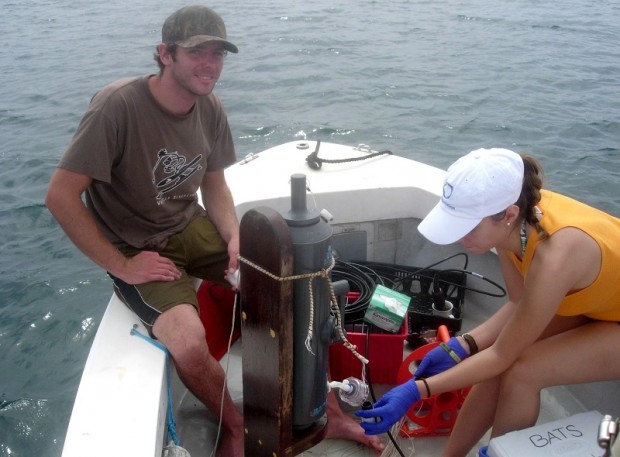BIOS: Devil’s Hole Acts As Natural Laboratory
Once a popular attraction for Bermuda’s tourists, Devil’s Hole now attracts a different type of visitor: scientists.
Located on the southern shore of Harrington Sound, Devil’s Hole is a closed embayment that experiences seasonal changes in water chemistry and biology that are distinct from the rest of Bermuda, making it a “natural laboratory” in which to study microbial organisms and the chemical processes they carry out.
BIOS said that, “Due to its location, Devil’s Hole has a relatively low water flow; this, in combination with high nutrient runoff from the surrounding land, leads to the production of organic matter in the water.
“This organic matter eventually sinks and it consumed by a variety of microbes. Microbes are an important part of the aquatic system, helping to cycle nutrients throughout the ecosystem and serving as a food source for other organisms.
“In 2008 an interdisciplinary group of scientists—including microbial oceanographers, biochemists, and microbiologists—came together to examine the variability of microbial communities at Devil’s Hole.
‘With researchers from the Bermuda Institute of Ocean Sciences (BIOS), University of California at Santa Barbara, and Oregon State University, as well as three BIOS student interns, the group was able to integrate biogeochemical and molecular biological approaches to their investigations, the results of which were recently published in the journal Environmental Microbiology.
“During the summer months, the waters in Devil’s Hole form a thermocline – a natural state where the surface waters are heated by the sun, resulting in warm (and less dense) water at the surface that remain separate from the deeper waters.
“While seasonal thermoclines are vital to planktonic ecosystems and primary producers in the ocean, in semi-closed systems like Devil’s Hole they contribute to severe changes in oxygen.
“When microbes in the bottom layer of water consume organic matter and respire, they use up the available oxygen; because the water layers don’t mix, this results in hypoxia (very low oxygen concentrations) or anoxia (no measureable oxygen) in the deeper water.
“The team of researchers observed a clear transition in the microbial community within Devil’s Hole as the thermocline developed and oxygen levels became depleted. By applying molecular approaches and genomic sequencing, they were also able to identify which organisms died off and which ones flourished.
“The results from Devil’s Hole may prove to be of interest to scientists around the globe who are studying oxygen minimum zones (OMZ) that are expanding as a result of nutrient inputs and climate change.
Lead author on the study, BIOS Microbial Observatory Lab Manager Rachel Parsons, notes that, “Bermuda’s own Devil’s Hole represents a perfect natural laboratory in which to study microbial transformations within OMZ. It has reliable transitions from a stratified to a mixed water column, unlike other systems such as the Black Sea.”
For more information on the research conducted at Devil’s Hole, please visit the BIOS Oceanic Microbial Observatory’s website and click on “related projects” at the top of the page.
Read More About
Category: All, Environment, News




just make sure they leave it how they found it…thank you
Great to see a Bermudian Scientist lead such internationally important research. Well done Rachel Parsons! !